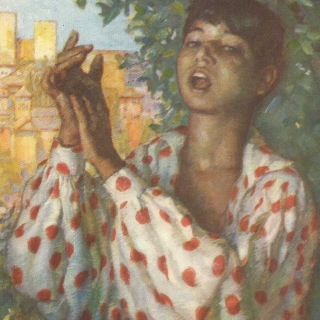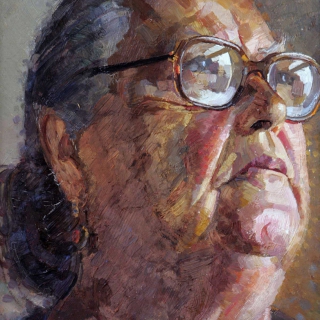The activities of Amalio have a common denominator: Andalusia. It is a pictorial and passionate interpretation of this land; it is the period of testimonial painting and poetic realism that are captured in this series of paintings.
The famous Esperanza Suárez Montoya, her daughters, her granddaughters. All of them were painted time after time by Amalio, especially Esperanza herself. All this work constitutes what he called “The World of Esperanza”. This collection is as deeply realistic that makes one’s heart tremble while watching the race portrayed in black, totally in black, with a beautiful face marked by the years and a sweet look lost in the memories of a life, of a crying without tears, with the sorrow contained in a lump in one’s throat.



































